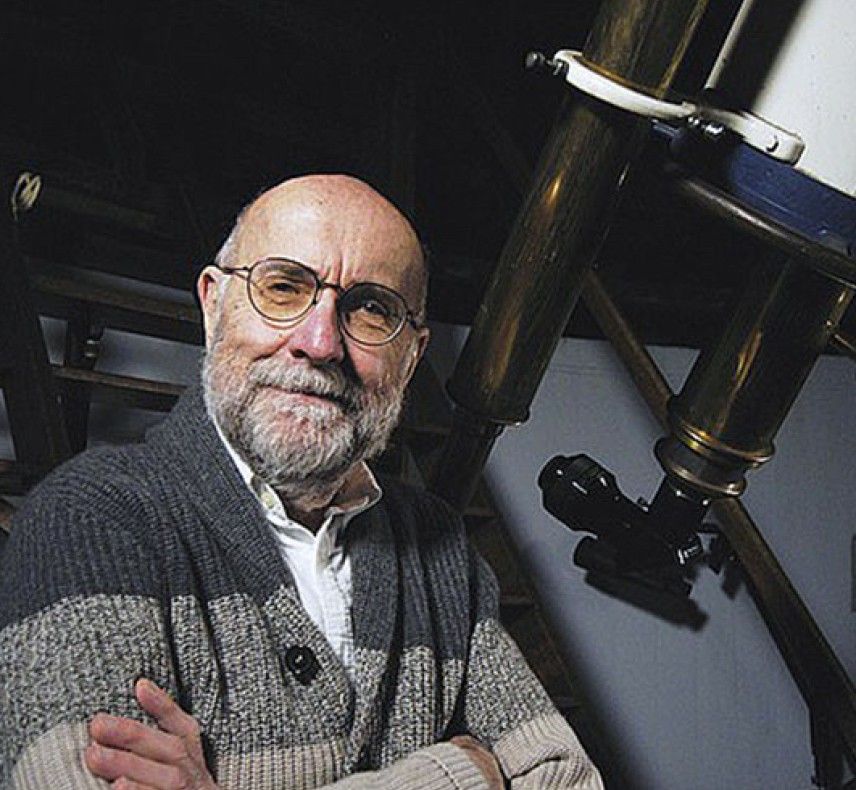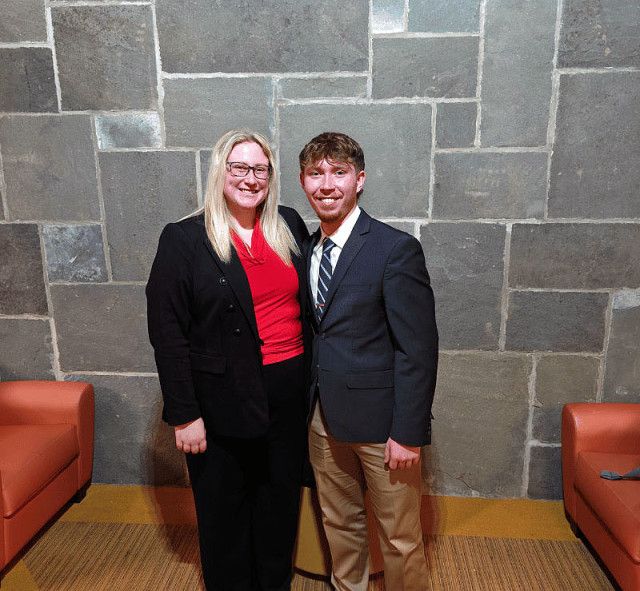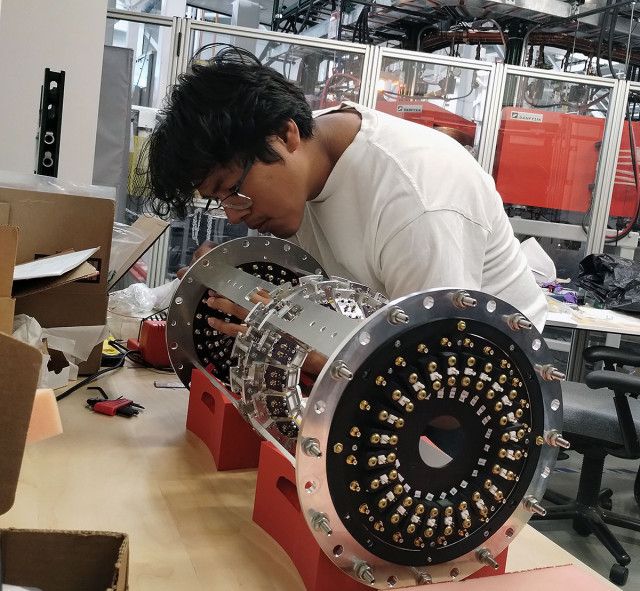Wittenberg’s resident astronomer, Professor Emeritus of Physics Daniel Fleisch, is going to be viewing the solar system in a different light soon as he is packing his bags for Grand Canyon National Park in Arizona.
Adding yet another amazing opportunity to his already illustrious resume, Fleisch will serve as the Astronomer in Residence at the park from Nov. 21 to Dec. 21 through the Grand Canyon Conservancy. While there, he will have the opportunity to practice and share his discipline under one of the most “pristine night skies,” while living and working at the historic Verkamp’s Visitor Center artist residence at Grand Canyon National Park. The position piqued his interest when he came across the announcement in an astronomy journal.
“The types of activity described in the program announcement are right up my alley,” said Fleisch, who has been studying the night sky since the 1950s and teaching astronomy for two decades. “I've been reading a lot of articles about ‘awe’ in scientific and popular journals, and I've noticed that many of those articles give two examples of stimuli that can inspire feelings of awe: seeing the Grand Canyon and gazing deeply into the night sky. For my residency at the Grand Canyon, I've put together a program that includes more than 20 presentations and observing sessions, all designed not only to impart information about the Earth, other planets, and the universe, but also to provide an opportunity for visitors to experience the profound emotion of ‘awe,’ reap the benefits of that emotion, and help them understand the value of science in our world.”
His 20 presentations will include five about the solar system, five about stars, five about galaxies, and five about cosmology while touching on the search for extraterrestrial intelligence. Fleisch also plans to conduct 20 observing sessions along with daytime pop-up solar viewing presentations using telescopes with specialized filters that allow visitors to safely view the sun.
During his time there, Fleisch is looking forward to seeing the Geminids meteor shower, which will peak on Dec. 14. However, he is most excited to see bright planets above the horizon during his residency.
“I always try to minimize expectations for meteor showers since the common depictions of multiple bright meteors zinging across the sky every few seconds is unrealistic (at the peak of a good meteor shower, observers under clear, dark skies can expect to see one or two meteors per minute),” he said. “But the best way to view a meteor shower is to recline on a comfortable chair or blanket at a location far away from the light pollution that plagues most of our cities and towns, so I’m looking forward to experiencing the Geminids over the Grand Canyon, which received International Dark Sky Park certification in 2019.
“But more than any single-night event, I’m excited by the fact that the bright planets Mars, Jupiter, and Saturn will all be above the horizon most evenings of my residency. Even better, some solar-system objects that most people have never seen, including the planets Uranus and Neptune and the asteroids Vesta and Juno, will also be well-positioned for evening viewing through telescopes,” he added.
“Using just our eyes, on a clear night we might be able to see 30 to 50 stars from Wittenberg’s campus,” Fleish explained, but on a good night from the South Rim Trail of the Grand Canyon, over 2,000 stars are visible through the naked eye.
“Looking through a telescope, planets appear more detailed, and faint deep-space objects such as nebulas and galaxies appear brighter,” he added. “I’m planning to take several telescopes, specialized astronomical cameras, and other equipment that will allow us to use electronically assisted astronomy (EAA) at the observing sessions. With this system, visitors will be able to see clear live images of extremely distant and faint objects that are barely visible even through the largest telescopes.”
Recipient of the 2004 Alumni Association Award for Distinguished Teaching, and the 2010 Ohio Professor of the Year, Fleisch is one of the top 25 science, technology, engineering, and mathematics (STEM) professors in Ohio. Named the Outstanding Faculty Member at the Wittenberg Greek scholarship awards in 2000, he also won the Omicron Delta Kappa Award for Excellence in Teaching in 2002. In 2003 and in 2005, he was recognized for Faculty Excellence and Innovation by the Southwestern Ohio Council for Higher Education (SOCHE), which recently changed its name to Strategic Ohio Council for Higher Education.
Fleisch received his B.S. in physics from Georgetown University and his M.S. and Ph.D. in space physics and astronomy from Rice University. Specializing in electromagnetics and space physics, he is a best-selling author, penning five books thus far with Cambridge University Press, including the co-authored work A Student's Guide to the Mathematics of Astronomy with 2001 Wittenberg alumna, astronomer, writer, and professor Julia Kregenow, and his latest release, A Student's Guide to the Schrödinger Equation. His other books include A Student's Guide to Maxwell's Equations, published by Cambridge University Press in 2008, and A Student's Guide to Vectors and Tensors, published by Cambridge in 2011. Additionally, he co-authored with Wittenberg physics graduate Professor Laura Kinnaman of Morningside College A Student's Guide to Waves, published by Cambridge in 2014 and the McGraw-Hill textbook Electromagnetics with Applications with late professor John Kraus of The Ohio State University. Fleisch's student’s guides have become international best-sellers and have been translated into Japanese, Korean, Chinese, and Italian.
A regular contributor of science commentary to PBS station WYSO of Yellow Springs, Fleisch has published articles in the IEEE Transactions, The Journal of Atmospheric and Terrestrial Physics, and Microwave Journal, and he has presented more than a dozen professional papers on topics related to high-speed microwave instrumentation and radar cross-section measurement. In 2006, he appeared in the documentary "The Dayton Codebreakers" shown on Public Television, and in 2009, he was the first U.S. citizen to receive an Arthur Award from Stuart McLean of the Canadian Broadcasting Corporation.
Through Fleisch and other scientists and artists, the Grand Canyon Conservancy’s Astronomer in Residence program aims to inspire visitors to see the values of dark night skies, spread awareness about the threats of light pollution, and explore society’s complex relationships with natural darkness.
For program dates and times, visit Grand Canyon Conservancy or Grand Canyon National Park.






